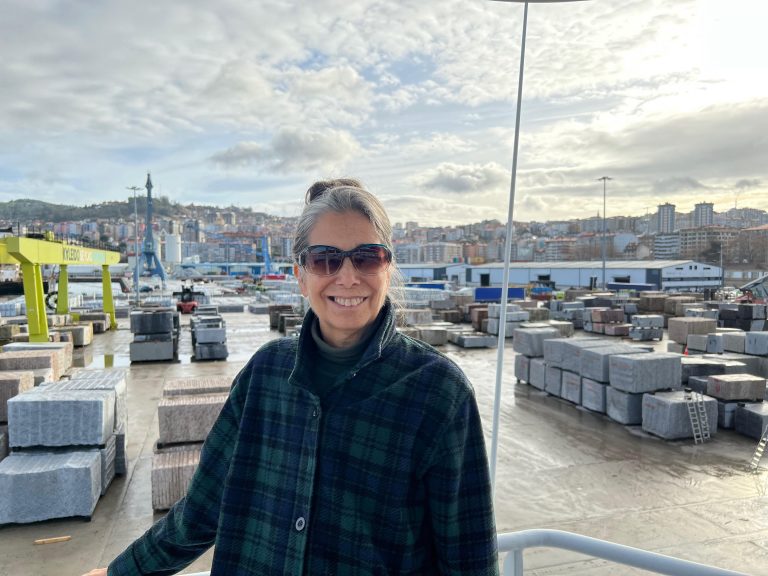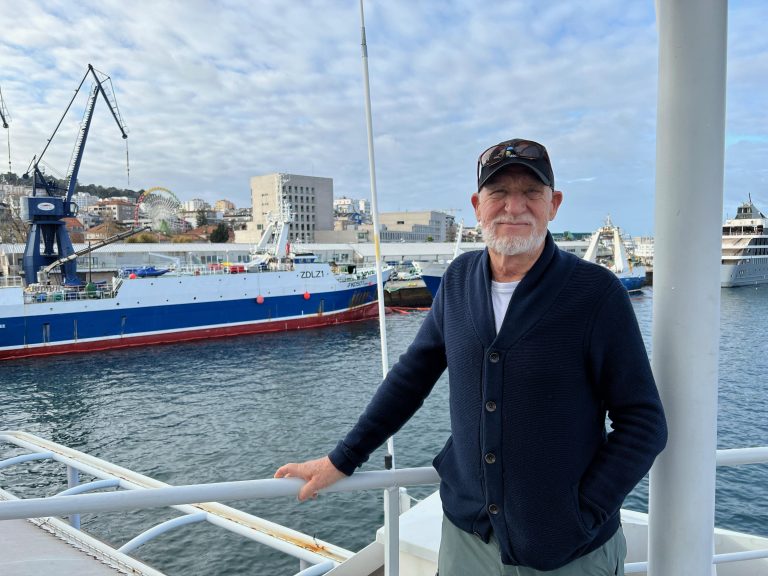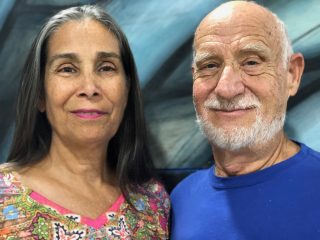Most mornings during our month-long voyage on the Falkor from La Paz, Mexico, to Vigo, Spain, we would get up early so we could marvel at the sunrise from the ship’s top deck (in marine lingo – the monkey island or deck). It is a small deck located directly above the bridge, in the front of the ship overlooking the bow. As the name suggests, one must scramble up quite a few flights of stairs to get to it.
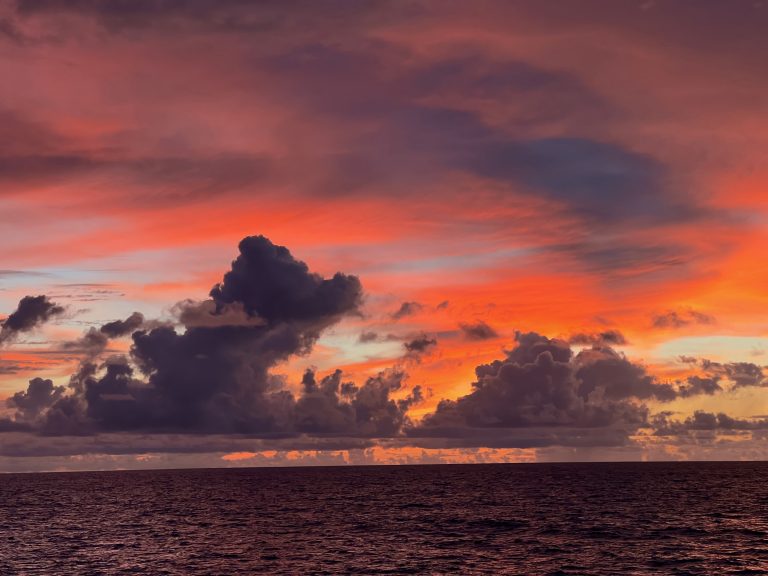
The reason we went every morning was for the 360 views of the start of a new day and the sense of flying through the air high above the ocean. We could indeed see for miles and miles. The fresh, windy air generated a cleanse that swept all the night’s stagnation out over the sea. There was always a sense of peace and renewal.
This morning ritual set the course for the day in our studio in the wet lab. We were working on two projects. The first was our Falkor Ice Cube Project for which we and each crew member threw a saltwater ice cube into the water each day at 2 pm ship time to enforce the grand need to find a way of life that can cool our Ocean.
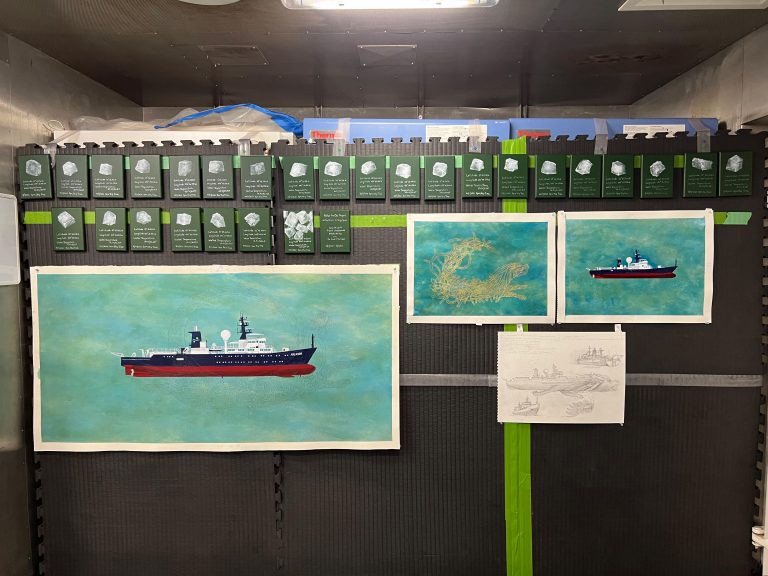
The second was, and still is, our painting of the ship Falkor and the Luck Dragon Falkor. Added to this painting will be the signatures of all the members of the crew. The signatures and the Luck Dragon will both be painted in gold to make clear that the crew both individually and collectively embodies the spirit of the ship.
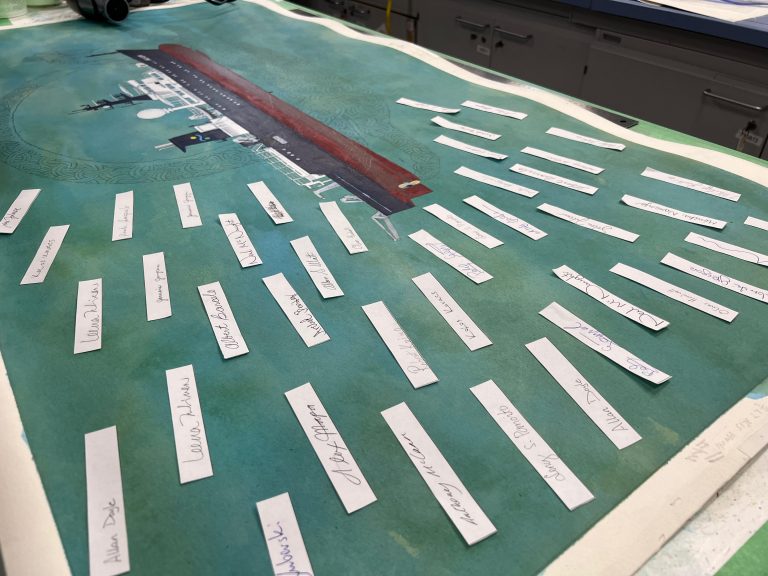
As with all journeys on a ship, there is always a chance for rough seas especially when crossing the North Atlantic in winter. The last couple of days while approaching Vigo, we encountered such waters. Robert said that it wouldn’t be a complete adventure without some tumultuous days. Well, along with our “complete adventure,” we had to hold off working in the studio in fear of our paintbrushes skidding across the painting. It is all a day in the life aboard ship, and neither of us would wish otherwise.
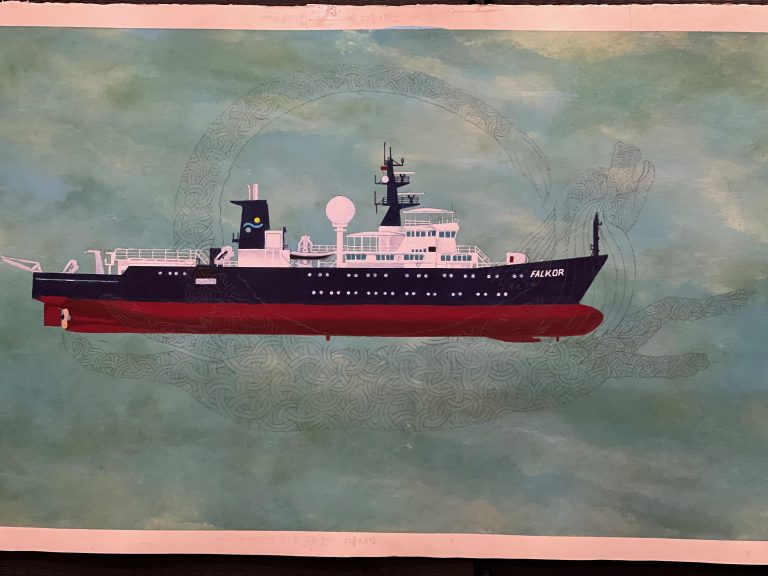
When there are scientists on board, however, there is every effort to avoid rough seas. The crew are dedicated to the mission of the Falkor. They do all they can to support the science research that each group of scientists pursues. Sailing in calm seas make this research more conducive and use of their submersible ROV (Remote Operated Vehicle) possible. One cannot be on board without seeing and feeling this dedication and their high level of expertise. The physical ship provides the infrastructure that makes the research possible, but the scientists with the crew provide the creative spirit.
The physical ship we know is going to change. The Luck Dragon will fly high above the Ocean until it finds Falkor Too, the new ship, and decide how it will embody this larger science vessel with its spirit.
Now that we have docked in Vigo, Spain, the Falkor’s final stop as a Schmidt Ocean Vessel, we went up to the monkey deck to look back toward where we have come and to survey the port city. We have turned 360 from when we left the USA. For example, although we have been land creatures all our lives, it is not till after this month-long voyage that we actually can feel the stability (the solidity) of being tied to land. That is just the start of what the Luck Dragon has in store for us in this never-ending story.
